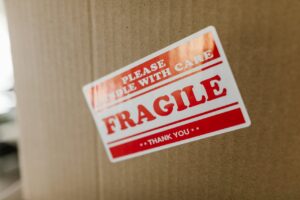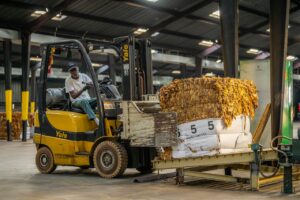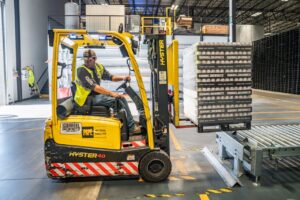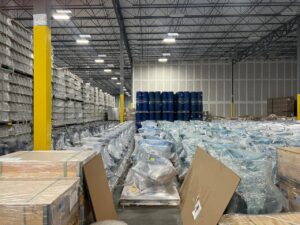
In the steel industry, steel is most often categorized based on how much carbon it contains. When there’s an increased amount of carbon content, the steel becomes harder and stronger. However, there has to be a proper balance – the steel can become fragile and harder to weld with at the other end of the extreme.
Vulcan Wire is proud to be a leading supplier of baling wire. No matter the specs you happen to require, we are sure to have a product that is perfect for the job. In addition to our wide selection of wire products, you’ll also enjoy great customer service and competitive prices when you order from us.
What is Carbon Steel?
A lot of people make the mistake of thinking that all steel is more or less the same. This is not at all true. Steel mostly consists of iron and carbon (among some other trace elements). It is very strong and rather affordable to manufacture, making it a go-to metal for manufacturing plants. But understand there are several types of steel and they are all unique.
Carbon steel is usually preferred over other types of steel. It’s a type of steel with a higher concentration of carbon in it. The amount of carbon that’s added compared to other types of steel actually isn’t that much at just 2.5%, but that small amount of carbon creates a number of benefits.
The Carbonization of Steel
As we mentioned, steel is mostly just iron and carbon. So how does it all work? Carbon strengthens iron, making steel in the process. At a microscopic level, carbon actually distorts the crystal lattices of the iron. This effect is not true for all metals, but it does work for titanium and vanadium.
How Strong Is Carbon Steel?
Carbon steel is a rather strong material, but it’s not perfect. The main difference is whether it’s low or medium carbon steel, which we will talk further about. Regardless of the type, all carbon steels can rust. They are good at retaining their shape and don’t take on many abrasions.
Pros and Cons of Low-Carbon Steel
This is the most common type of steel due to its low manufacturing cost and. This type of carbon steel is more malleable and ductile. It’s less strong, but one way to strengthen it is through a process known as carburizing. It’s used in beams, buildings, pipelines, etc. It’s still recognized as the weak option.
Pros and Cons of Medium-Carbon Steel
Medium-carbon steel is considered the balanced option. It has respectable strength and ductility along with impressive wear resistance. This is another very popular option. It’s most often used in machine components, gears, axles, railway parts, Medium-carbon steel when compared to high-carbon steel lacks hardness and tensile strength, but makes up for it by being formable.
Pros and Cons of High-Carbon Steel
Several hundred years ago, bladesmiths in Japan used high-carbon steel in order to create special swords. Nowadays, it’s used in automotive parts, construction materials, etc. It’s very strong. And because it’s so strong, it can be rather difficult to work with. Unlike its low and medium counterparts, it can’t be molded into other shapes which limits its applications.
Final Thoughts
With everything said, it’s clear that the carbon count in steel is significant and worth understanding. When it comes to choosing the appropriate type of banding wire for your company, it can be a little complicated. If you need some extra help, you should contact Vulcan Wire for assistance.





















